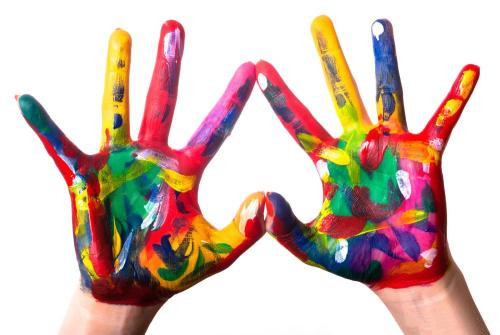First, broodstock
1. Sources and selections can be harvested from rivers, reservoirs, lakes, or from farmed commercial fish. Requires individuals large, healthy, disease-free, and good gonadal development.
2. Mature age and body weight Age 2 to 3 years old, stingray weight 150 grams or more, more than 200 grams of eel eel, male and female ratio can be 1:2.
3. Identification of male and female seedlings and undeveloped fishes is difficult to identify. Fish that have a body weight of 50 g or more and are mature are more easily identified. The male body is slender, with a prominent genital process between the anal fin and the anus, which is more than 5 mm long. The female body is thick and short, and the abdomen is enlarged and soft and has no genital procession. The same batch of male fish is larger than female.
4. The cultivation of broodstock ponds is generally 1 to 2 mu, and the depth is 1 to 1.5 meters. The water resources are abundant, the water quality is good, and the environment is quiet. Inlet and outflow should be set up to stop the fish facilities. Before the broodstock enters the pond, it must be thoroughly cleared. The broodstock can be weighed for about 100 kilograms per mu, and the mixed bream and carp species can be 200 to 300 tails. Because there is some contradiction in the feeding between stingrays and sturgeon and sturgeon, these breeds are no longer used in broodstock.
Feeding broodstock feed can feed some small trash fish, shrimp, fish, quail, shrimp, etc. can also be processed into meat to feed. For example, with compound feed, fishmeal should have a large proportion, protein should account for 36% to 38%, and be processed into soft and wet feed on the same day. When the water temperature rises above 10°C, it can be fed. Daily feeding: water temperature 10 ~ 15 °C, feed 1% ~ 2% of body weight; water temperature 15 ~ 20 °C, feed 2% ~ 3% of body weight; water temperature 20 ~ 25 °C, feed 3% of body weight ~4%. Feed it twice a day and feed on a stationary feed table. To keep the broodstock with high dissolved oxygen, flush the water once every 7-10 days with the broodstock, which can increase oxygen, improve water quality, and stimulate the development of gonads.
Second, oxytocin
1. The urine production pool is commonly used for cement pools, with an area of ​​4 to 10 square meters and a depth of 0.6 to 0.8 meters. To facilitate drainage, the bottom of the tank can be inclined to one side or a corner, leaving a pot-shaped, spawning nest at the outlet.
2. Artificial fish nests are usually made by poplar roots, brown pieces, scrap mesh, etc. to make fish nests.
3. Oxygen-promoting agents include luteinizing hormone-releasing hormone analogues (LRH-A), human chorionic gonadotropin (HCG), domoxone (DOM), ovulation 2, carp or salmon pituitary gland. The dosage of various oxytocins used alone is generally (per kg of female fish): luteinizing hormone-releasing hormone analogues 20 to 50 micrograms; chorionic gonadotropins 800 to 1200 IU; carp, carp pituitary gland 3 to 5 mg . Males use half or two thirds of the female fish. In the production of analogs can be mixed with the pituitary, the effect is better. The injection site is mostly at the base of the pectoral fin, and can be injected twice, with an interval of 12 to 18 hours. The male fish was injected once at the second injection of the female.
4. Spawning Before the second injection of oxytocic, the fish nest should be put in place. After oxysterone production, the female and male fish should be placed in the spawning pool at a ratio of 1:1.2 to let them spawn naturally. The flushing water stimulated the broodstock 3 to 4 hours before the estrus of the yellow squid and changed to micro-flowing water when the estrus was started. The effect was better. The suitable water temperature for oxytocin production is 20~30°C, and the optimum water temperature is 23~28°C. After the oxytocin injection, the effect time (hours) is not the same under different water temperature conditions.
Third, hatching
1. The temperature can be hatched at 18~30°C, the suitable water temperature is 21~29°C, and the optimal water temperature is 23~28°C.
2. Incubation method Incubation equipment can use the “Four Home Fish†spawning pool, hatching ring, incubation tank, hatching barrel, etc. It is advisable to adopt the method of natural hatching. First, the broodstock after the second injection is directly placed into the incubator equipment. During the spawning period, the broodstock is caught and the fertilized eggs are left in the original pool to be hatched with running water. The fry have the swimming ability and are concentrated in the fry pool. The second is to remove the poplar whiskers and brown slices with fish eggs from the spawning tank, sterilize them with disinfecting solution for 0.5~1 minutes, and then hang them in the hatching pond for running water to hatch.
Pigments are used for coloring paint, ink, plastic, fabric, cosmetics, food, and other materials. Most pigments used in manufacturing and the visual arts are dry colorants, usually ground into a fine powder. This powder is added to a binder (or vehicle), a relatively neutral or colorless material that suspends the pigment and gives the paint its adhesion.

Just because of the pigments, our world become colorful!
Paint Pigments,Plastic Pigments,Cosmetic Pigments,Dry Pigments,Dry Powder Pigments
Shandong Tiancheng Chemical Co., Ltd. , https://www.tianchengchemical.com